THE BREAKDOWN OF NERVES
Peripheral Neuropathy
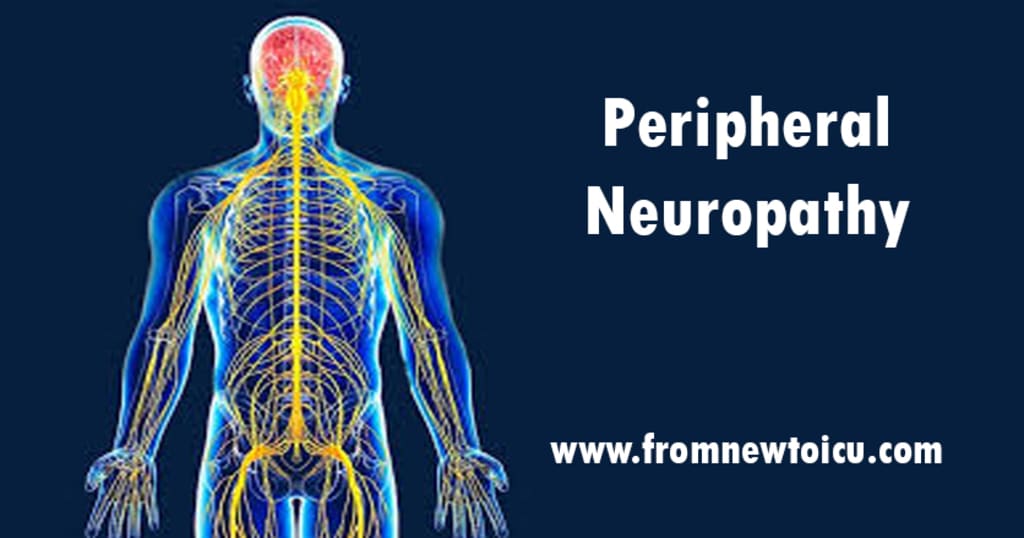
The nervous system structures that are involved in the sensory system consist of our central nervous system and the peripheral nervous system. The central nervous system consists of our brain and the spinal cord (Mayo Clinic. 2022). They work together as a primary significant power source. The peripheral nervous system is the nerves and the ganglia that connect the central nervous system to the rest of the body. The peripheral nervous system connects the central nervous system to the organs, blood vessels, the skin, and the digestion system. The peripheral nervous system helps with sensation, touch, and pain. It carries messages to and from the central nervous system to the other body parts and then brings them back so the brain knows what to do.
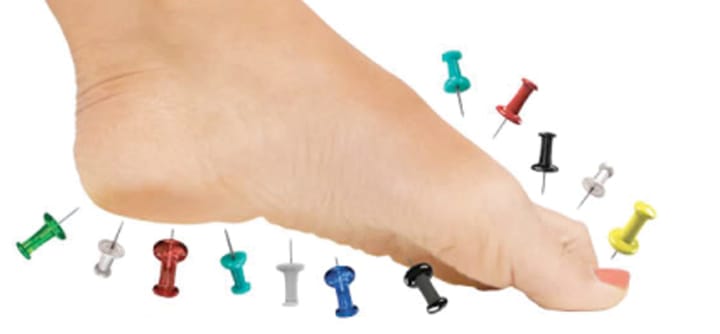
The role of the messaging system is to connect the central nervous system to all the organs, body parts, and skin. It’s so amazing how powerful our brain is! It feels the connection between our touch to our brain, then the brain will connect it back to the muscles which will connect it to the nerves. Then the nerves will tell the brain what to do by a connection right back. It’s awesome. The peripheral nervous system controls the autonomic body functions, motor nerves, and sensory nerves.
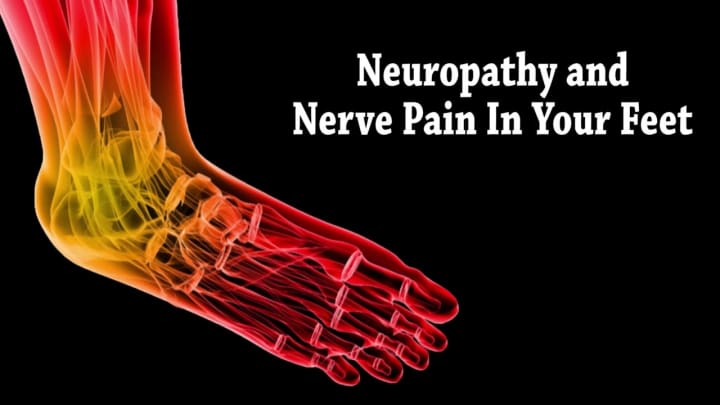
The somatic nervous system is voluntary movements. It does the sensory and the motor nerves. There is the somatic nervous system which is responsible for carrying out sensory information and motor information in our bodies. This contains motor neurons and sensory neurons. Also, it can happen voluntarily. For example, if I want to put my finger into hot water until I can no longer stand it, that is a voluntary motion.
Sensory nerves are responsible for sensations, feeling, touch, and pain. They connect from your spinal cord and brain to your organs and skin. It gives you your touch and pain sensations. People with sensory nerve damage, light, sound, touch, taste, or smell can over stimulate them (Lee & Holland, Susan & Kimberly 2022).
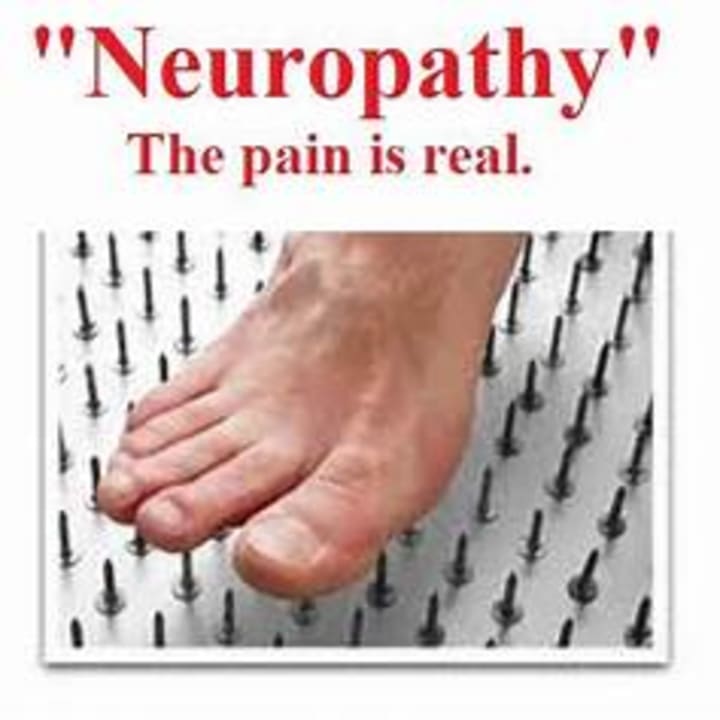
Motor nerves are responsible for movement. They are from the central nervous system, and they help with movement. They help with bending, walking, and even sitting (Mayo Clinic. 2022). This is a major role in our bodies' function.
Autonomic nerves are responsible for involuntary movement. When we use them, we do not realize we are doing it. This is movement such as breathing or our blood pressure. We have it and then we do not realize it’s happening. This is a major role in our bodies function too.
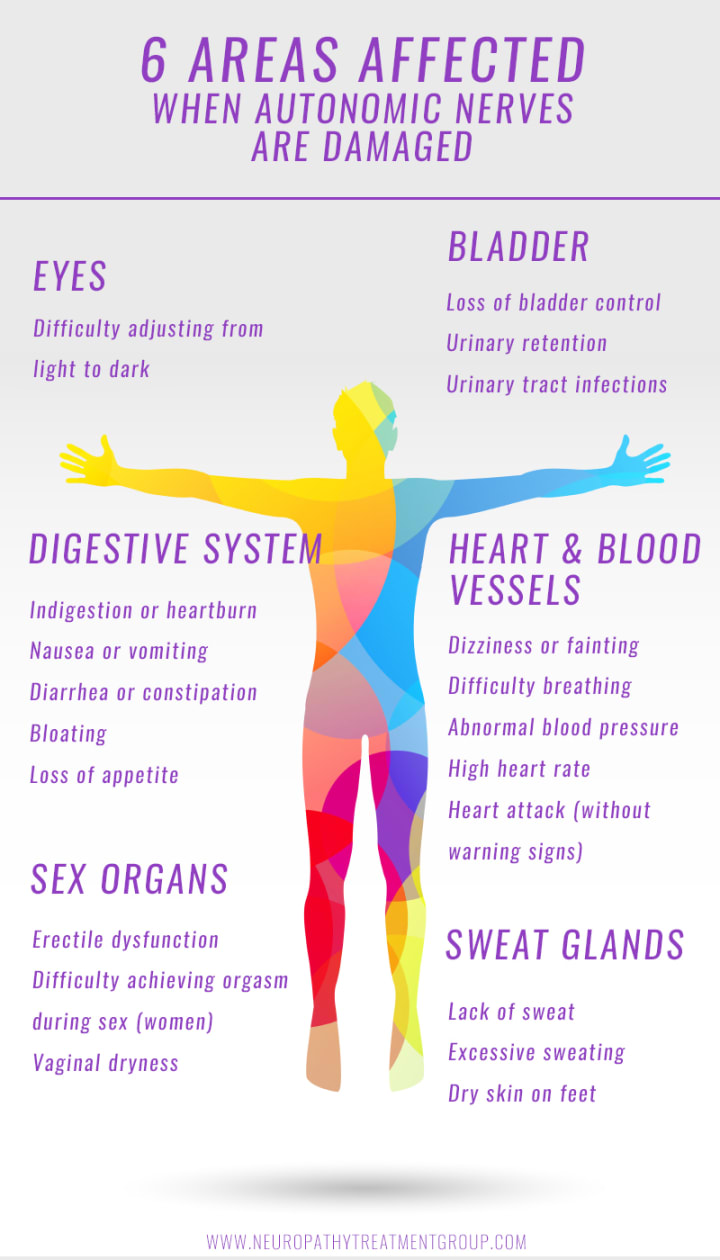
There is the autonomic nervous system which is responsible for involuntary movements in our body. These are like our heart rate, breathing, and digestion. The autonomic nervous system is usually undetected and it’s doing its job without being told to do it. It is involuntary movements.
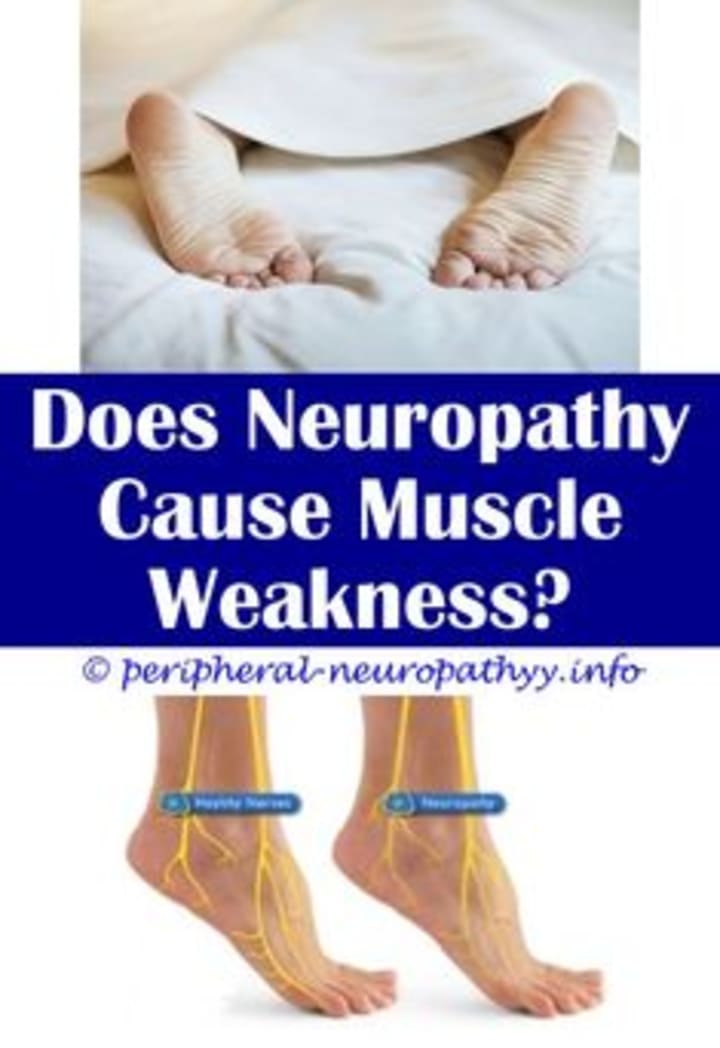
There are two parts to the autonomic nervous system. Sympathetic system and the parasympathetic system. The Sympathetic system is ready anytime there is a threat. It will put out more energy to help the body. It’s a “flight or fight” response. When it feels a threat, it will put out acetylcholine to get more energy out. The Parasympathetic system helps the body restore it to normal if it reaches the sympathetic point like if a threat came and the threat is gone. The parasympathetic system releases norepinephrine which is what helps it restore the body back to normal.
If the structure of the peripheral nervous system is damaged, it can cause a lot of pain to a person. When there is something wrong with the peripheral nervous system because it is damaged, it can cause muscle weakness, loss of sensation, and even paralysis. It can get very serious and very painful.
What causes peripheral neuropathy? There are many different reasons such as medications, alcohol, trauma, diseases, injury, HIV, infections, and autoimmune disorders (Rad BSc (Hons), Adrian 2023). Nerve damage is serious, and it is so important to take care of it as soon as it happens. Many times, it is because of trauma. A person needs to seek treatment and see a doctor right away.
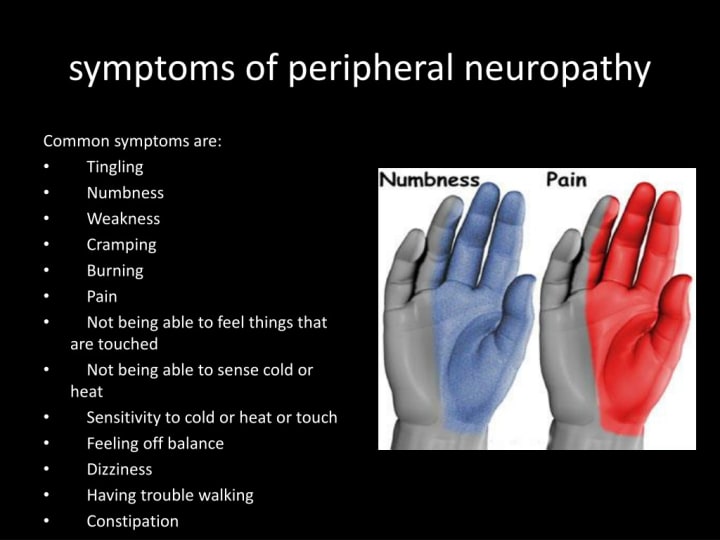
There are motor nerves that regulate walking and bending. This is voluntary control, and a person is aware of it. You know when you are going to hold something or walk to the door for instance. Damage to these nerves would be muscle cramps, twitching, and muscle weakness.
There are sensory nerves which regulate touch, sensations, vibrations, and pain sensations (Lee & Holland, Susan & Kimberly 2022). These sensations can be felt all over in the skin. Damage to these nerves feels like tingling and numbness in the hands and feet. Also, pain sensations can make it hard to keep balance in the legs. Depending on how far the damage is in the nerves, people with this neuropathy might have a hard time fastening buttons and taking off lids to bottles because of the pain. The lack of touch can create sores on feet (or anywhere on the body) if they did not know they were there.
Autonomic nerves regulate natural activities in our bodies. These nerves are not regulated consciously. An example would be breathing, or digesting. If it is damaged there might be excessive sweating, asthma, and gastrointestinal problems such as constipation or urination problems.
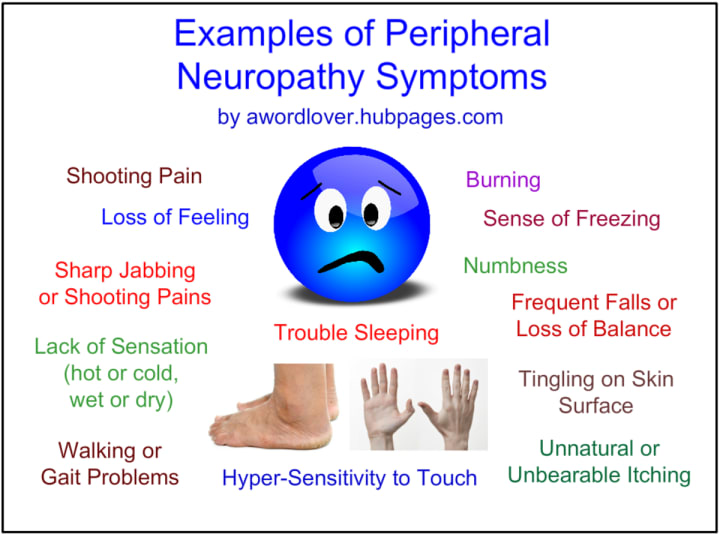
Autonomic Neuropathy is damage to the nerves in the autonomic body function. The autonomic body functions are unconscious like breathing, digestion, and bladder function. The nerves go from the brain to the organs and blood vessels, sweat glands, and the heart. These are all unconscious functions in our body. Damage to these nerves would cause asthma, bladder problems, and GI problems. Some people may have constipation and must urinate a lot.
There are different symptoms of Peripheral neuropathy. The main symptoms are numbness, tingling, burning, stabbing pain, shooting pain, loss of balance, toes getting discolored, feet looking different, sores on the feet, and hot and cold may be more heightened. If the nerves are damaged it can cause weakness, and numbness in the hands and feet. A person may have problems with digestion, urination, and circulation.
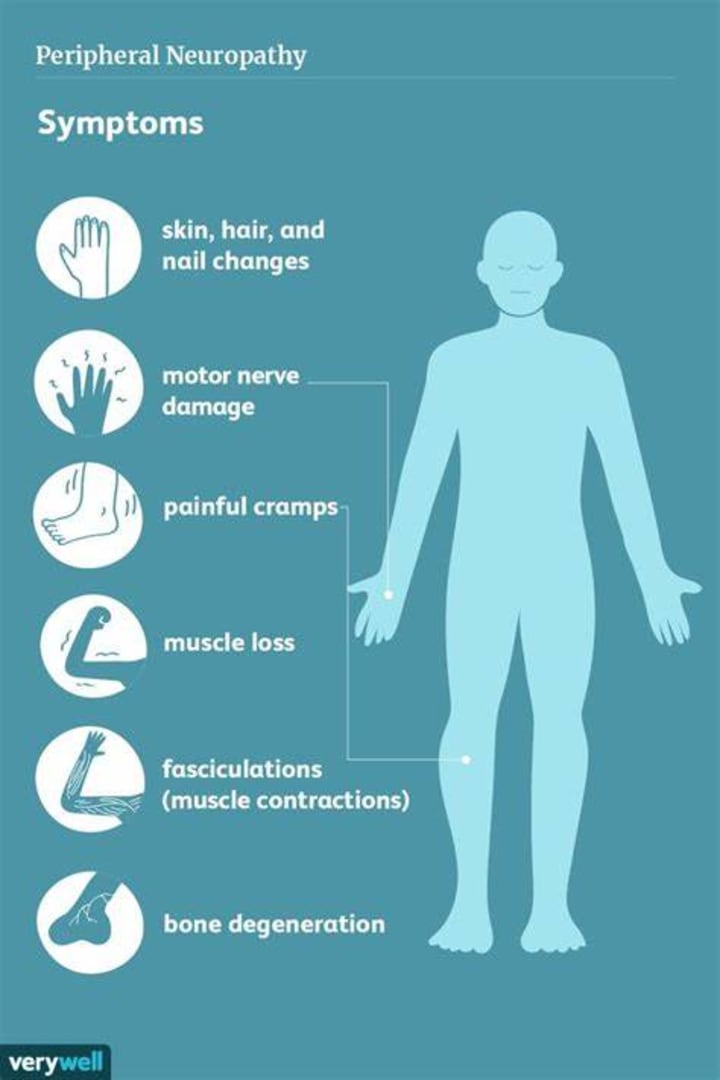
The symptoms might be different for someone with no damage to someone experiencing extreme damage. Someone with diabetes would feel the neuropathy if they have been going through it and not taking care of their diabetes. If someone is just starting to go through nerve pain like a pinched nerve, their pain may be intense. They may have sensations like stepping on broken glass. Someone with neuropathy could have excessive sweating, bowel/bladder problems, and heat intolerance. They may have tingling and numbness in their hands and feet. They may even have the numbness in their legs. They may have sharp stabbing pain shooting up their legs. That is the worst, the pain that they cannot get rid of. They have sensitivity to touch, there is muscle weakness, and lack of coordination.
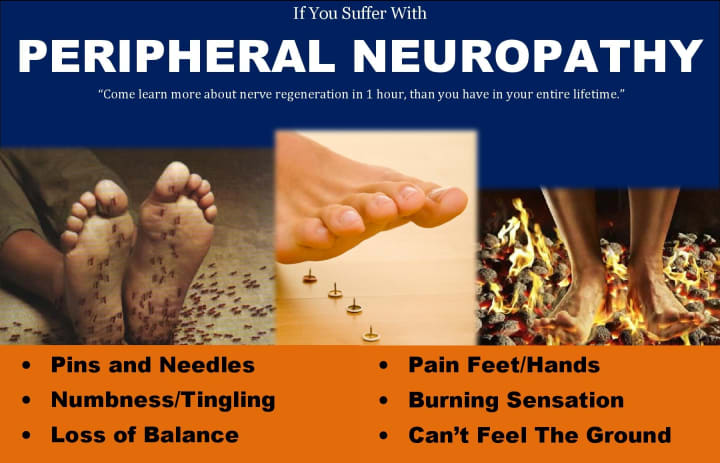
The numbness and tingling in the fingertips and feet have just started to someone who experiencing peripheral neuropathy. For someone who has had it for a long time, the numbness and tingling sensation is still there but the pain is deeper. The pain is still intense; however, they may have to urinate more. They may have frequent bathroom breaks and notice that their big toe is looking different. The big toe looks discolored. Is it fungus or lack of circulation?
Treatment for peripheral neuropathy after diagnosis after a visit to the doctor depends on the diagnosis. The doctor may do a nerve conduction test to find out how much nerve damage there is and see what treatment needs to be done. This is a very uncomfortable test for people that do not have nerve damage. It’s an uncomfortable test for those that do have nerve damage because they find out that they have more damage. It’s hard mentally too. Depending on the damage to the nerves, the doctor may send the patient to physical therapy to keep them moving. They need to keep blood circulating and moving around. The best exercise I believe is stretches and yoga. It helps the body flow and keep limber.

Yoga is a good exercise for chronic pain from peripheral neuropathy (NervePainGuide. 2023). I do that in the gym for my back when I can. That is a good exercise for movement for those that have less ability to move but must keep the circulation going. There are several low-key yoga exercises for chronic pain peripheral neuropathy. This is for people that suffer from low mobility. Keep low-key yoga poses to keep circulation up, hydration up, warm baths, and walk as much as you can are some good treatments for peripheral neuropathy. They will help the pain and help the circulation.
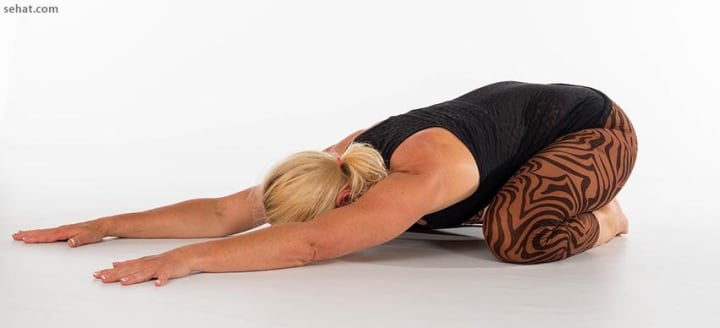
References
Mayo Clinic. (2022). Peripheral nerve injuries. https://www.mayoclinic.org/diseases-conditions/peripheral-nerve-injuries/symptoms-causes/syc-20355631
NervePainGuide. (2023). 6 Simple Yoga Exercises for Peripheral Neuropathy Pain Relief You Can Do At Home. https://nervepainguide.org/yoga-exercises-for-neuropathy/
Rad BSc (Hons), Adrian (2023). Peripheral nervous system. https://www.kenhub.com/en/library/anatomy/the-peripheral-nervous-system
Lee & Holland, Susan & Kimberly (2022). Sensory Processing Disorder: Understanding Sensory Issues in Children. https://www.healthline.com/health/childrens-health/sensory-issues-in-children
About the Creator
Regina Brooks
Freelance writer, dog lover, and working on my bachelor's degree in Psych at Uni of Phoenix. I love recycling. I try to make the environment a better place. I believe in positivity and showing others a smile instead of negativity.
Enjoyed the story? Support the Creator.
Subscribe for free to receive all their stories in your feed. You could also pledge your support or give them a one-off tip, letting them know you appreciate their work.


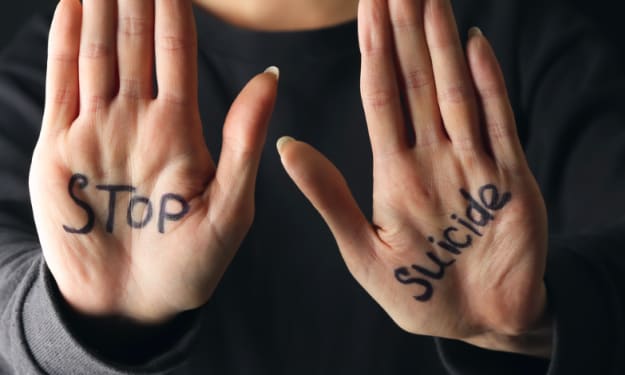



Comments
Regina Brooks is not accepting comments at the moment
Want to show your support? Send them a one-off tip.